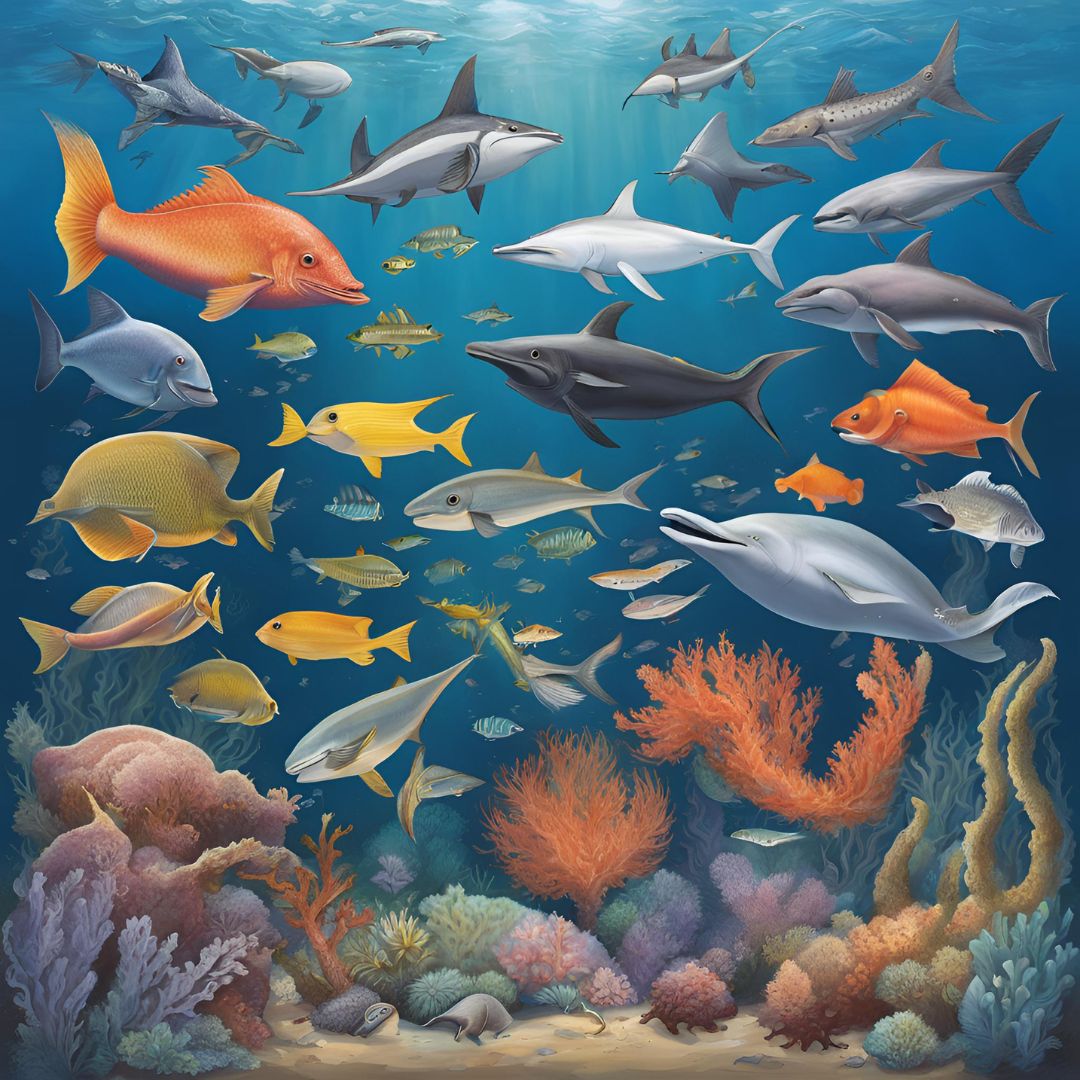Amazing Animals of the Abyssopelagic Zone

Amazing Animals of the Abyssopelagic Zone
Deep in the ocean, there is a dark and mysterious place called the Abyssopelagic zone. This zone is between 4,000 and 6,000 meters (13,000 to 20,000 feet) underwater. It’s so deep that no sunlight can reach it. The water is very cold and under a lot of pressure. Even though it’s a tough place to live, some incredible creatures call this place home!
One of these creatures is the abyssal Cusk eel. These eels have long, skinny bodies that help them swim easily. Their eyes are very small because it’s so dark. Instead of using their eyes, they rely on other senses to find food and move around.
Another cool animal is the deep-sea jellyfish. Unlike jellyfish you might see at the beach, deep-sea jellyfish can glow in the dark! They use their light to attract food or talk to each other. Some have long, trailing tentacles that can sting and capture small fish.
The Giant squid is also a mysterious creature from this deep zone. These squids can grow up to 12 meters (40 feet) long! They have very big eyes to help them see in the dark. They use their long arms and tentacles to catch fish and other squids. They are so big and hard to find that they amaze scientists.
The Anglerfish is one of the most famous Abyssopelagic animals. It has a special lure on its head that lights up to attract food. It dangles this glowing lure in front of its mouth to lure in smaller fish and then quickly eats them. Its big mouth and sharp teeth make it a great hunter in the dark.
Deep-sea shrimp also live here. These shrimp have strong claws that they use to catch and crush their food. Some of these shrimp can glow in the dark too, which helps them find mates or scare away predators. They often live near hot spots on the ocean floor called hydrothermal vents.
The basket star is another interesting animal. It has a star-shaped body with many long, flexible arms. These arms spread out like a basket to catch small fish and tiny creatures drifting by. The basket star moves slowly and waits for food to come to it.
There’s a deep-sea squid called the Vampire squid. It has a dark red body and big eyes. Instead of hunting for food, the Vampire squid eats dead plankton and small particles that fall from above. Its dark color helps it hide in the darkness.
Deep-sea corals also live in the Abyssopelagic zone. These corals grow very slowly and can live for hundreds or even thousands of years. They create delicate structures that provide homes for other sea creatures. These corals are important for the deep-sea ecosystem.
Finally, the deep-sea sea cucumber lives on the ocean floor. It has tiny, flexible tube feet that help it move along the sea bed. It eats small particles and dead animals that settle on the ocean floor.
The Abyssopelagic zone is an amazing and mysterious part of our planet. Even though it is a harsh place to live, these creatures have special ways to survive. Learning about them helps us understand more about life in the deep sea.



